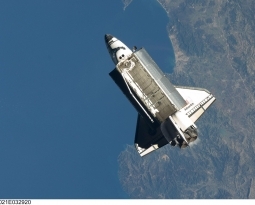Montana Patent of the Month – April 2021
Rocket engines must carry all of their fuel as well as a source of oxygen to burn that fuel into space. They are designed so that the fuel and oxidizer are transported through a closed manifold system with only an exhaust opening. Mountain Aerospace Research Solutions, Inc. (MARS) have redesigned the rocket engine, creating an air-breathing rocket engine with zero moving parts.
The MARS design has a rocket with both ends open – yes, you read that right. One end is designed to suction air with incredible force, expelling a mixture of superheated air and propellant out the other end. The incredible suction force is created using the rocket’s own combustion pressures. Their design uses an hourglass-shaped outer shell and a funnel shaped front end. The funnel acts as an intake area with the center aperture in communication with the throat and exhaust areas. This entire design is made a single piece of material which means no moving parts. Moving parts traditionally increase the cost and risk associated with engine combustion. MARS uses fluid dynamics to create pressure differentials, creating a vacuum in the combustion chamber which expels fluid into the throat. A second vacuum is created where the funnel intake expels fluid into the throat. These vacuums are aligned along the front end of the throat. Propellant (fuel and oxidizer) are injected into the combustion chamber and expelled at a high velocity which then creates the vacuum. This vacuum pulls ambient fluid 9air) in through the center of the funnel, mixing with the combustion stream. Having the rocket motor ingest air removes the need for rockets to store their own oxidizers. The now freely available oxidizer makes it possible for a bigger payload to be sent to space or moved around on other planets.
Are you developing new technology for an existing application? Did you know your development work could be eligible for the R&D Tax Credit and you can receive up to 14% back on your expenses? Even if your development isn’t successful your work may still qualify for R&D credits (i.e. you don’t need to have a patent to qualify). To find out more, please contact a Swanson Reed R&D Specialist today or check out our free online eligibility test.
Who We Are:
Swanson Reed is one of the U.S.’ largest Specialist R&D tax advisory firms. We manage all facets of the R&D tax credit program, from claim preparation and audit compliance to claim disputes.
Swanson Reed regularly hosts free webinars and provides free IRS CE and CPE credits for CPAs. For more information please visit us at www.swansonreed.com/webinars or contact your usual Swanson Reed representative.

















